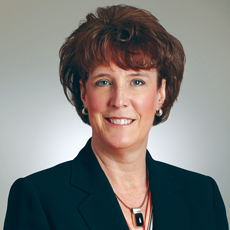
“I do not know that you understand what it feels like to say, ‘no’ to treatments, aggressive interventions or medications and ‘yes’ to the finality of death. It isn’t until you have to speak the words, make the decisions that the impact of your actions hit you like a tsunami of emotions.”
Those words were spoken over cups of tea that led to glasses of wine.
Sitting around the table were healthcare providers, leaders of palliative care, who had to walk the pathway they themselves had designed for others. The care plans were designed to ease the way into the final phase of living. Except all found the pathway was much harder even with in-depth knowledge and experience when it became personal.
I have always been a proponent of palliative care. I have designed palliative care systems for adult and pediatric hospitals. Palliative care defined by the Center to Advance Palliative Care (CAPC) is specialized medical care for people living with a serious (or chronic) illness. This type of care is focused on providing relief from the symptoms and stress of illness. The goal is to improve the quality of life for both the patient (resident) and the family.
Those with chronic diseases can use the guidelines of palliative care to aid in an approach that improves the quality of life for individuals for years. In my personal life, my mother-in-law was on a palliative care plan for more than 10 years. Her providers, friends and I worked together to address her needs. To weigh the risks, benefits and alternatives of each proposed medical decision.
The last few weeks of my father’s life, we were blessed that the hospitalist who cared for him in the hospital was also board certified in palliative care. We had to come to terms with his inability to not aspirate into his lungs when he ate and drank. We discussed the risks, benefits and alternatives of proposed care for him. A PEG tube with 24/7 care was discussed. I, being his designated decision-maker for healthcare, knew that was not what he would want but asked him anyway. I explained the procedure and what would happen if he decided that he wanted it. Before he was ill, he was clear about no tubes in his stomach. Now as I asked him again, he grabbed my hand and said, “Whatever you think is best.”
That is the moment that I will never forget. The decision that I was being asked to make was to either sustain my father’s life or make the decision that would end it. Sustain did not mean that he would not have complications, further deterioration of his health. It did mean that his total nutritional intake would be through the tube in his stomach. Because of the injury to his neck, he could not swallow fluids or solids without aspiration. The answer was to move him to palliative care or comfort care with hospice support.
I have spent my career as an advocate for palliative care. Championing that the right conversations occur before they are needed. I held the accountability for healthcare for my mother-in-law, and my parents. I had those right conversations beforehand with all three. In the space of under 20 months, I was faced with the reality of what it means to the decision-maker(s) and the circle of people that love them. Holding the right conversations beforehand, helped me to have a pathway to navigate when my emotions were raw. When I was trying to explain to others, the why of what was being done, I leaned into those previous discussions, to answer questions.
Looking back upon the kitchen table conversation, there was a theme that emerged like a brick being thrown through a window. The comment that you “do not know that you understand what it feels like to say, ‘no’ to treatments, interventions or medications and ‘yes’ to the finality of death.” You are saying, ‘yes’ to the finality of death.
What was not said, but understood: You will never forget that you said yes.
We, as healthcare providers, have worked hard to double check that advance directives are on file. We look for the POLST form upon admission. If the form is not completed, we work to get it done. We work hard to make sure that the right actions and forms are completed to ensure that wishes are respected.
Now we need to expand our actions from checklists to think about how we include the designated decision-maker(s) to understand the following:
- They might feel guilty as they struggle to make decisions that respect their loved one’s wishes and say yes to the finality of death. (We are here to support you as you grieve. We will connect you to grief counselors.)
- They might second guess their decision-making after their loved one passes. (We are here to talk and answer any lingering questions, even after their loved one is no longer with us.)
- They might feel fearful that they will make the wrong decisions. (We are here to share our knowledge, until they gain a level of comfort and understanding.)
I have always promoted that we have the right conversations with individuals and families before care decisions are made. Today, I promote that we have the right conversations beforehand, but we understand that those conversations are just the start of many conversations as we journey together.
Martie L. Moore, MAOM, RN, CPHQ, is the CEO of M2WL Consulting. She has been an executive healthcare leader for more than 20 years. She has served on advisory boards for the National Pressure Injury Advisory Panel and the American Nurses Association, and she currently serves on the Dean’s Advisory Board at the University of Central Florida College of Nursing and Sigma, International Honor Society for Nursing. She was honored by Saint Martin’s University with an honorary doctorate degree for her service and accomplishments in advancing healthcare.
The opinions expressed in McKnight’s Long-Term Care News guest submissions are the author’s and are not necessarily those of McKnight’s Long-Term Care News or its editors.




